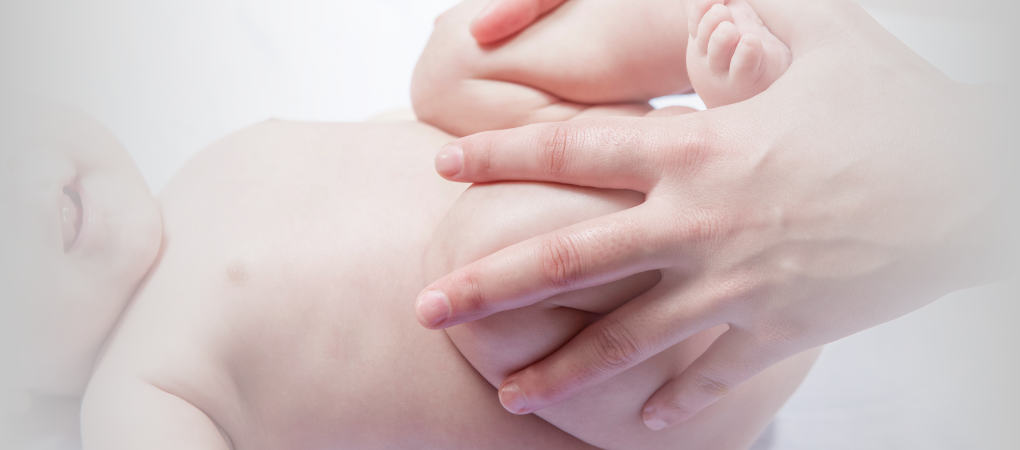Francesca Galiano
|
21/09/2022 - Last update 28/12/2022
Clive Hayden, Brenda Mullinger | Year 2006
A preliminary assessment of the impact of cranial osteopathy for the relief of infantile colic
Pathology:
Infantile colic
Type of study:
Pilot randomized controlled trial
Date of publication of the study’:
2006/Feb/08

Purpose of the study
- Objective: to evaluate the effect of cranial OMT on infants with colic
- Measured outcomes:
- Primary: average number of hours spent crying out of 24 and average number of hours spent sleeping out of 24
- Secondary: correlation between time spent crying and time spent sleeping
Participants
- Number: 28 infants (6 female and 22 male)
- Criteria of inclusion:1-12 weeks of age, with no previous OMT, with signs of infantile colic (90 minutes of inconsolable crying over 24 hours for at least 5 of the last 7 days, showing normal behavior during the remaining time; loud gurgling noises from the abdomen, or borborygmi; knees drawn up towards the chest; clenched fists; backwards bending of the back and trunk), no sign or symptom indicating other conditions
- Groups of study: 2 groups obtained by randomization
- Group 1: cranial OMT, 14 infants (1 female and 13 male, mean age 46.4 days)
- Group 2: no treatment, 14 infants (5 female and 9 male, mean age 44.5 days)
- 2 infants were withdrawn
Interventions and evaluations
- Evaluation through daily diary of the time infants spent crying, sleeping and being held/rocked to be calmed down during a colic attack
- Evaluation of the past medical history and questionnaire on the delivery details, on children’s behavior during a colic attack, on sleeping and eating patterns
- 5 weekly sessions of cranial OMT of 30 minutes (1 hour for the first session as it also included overall evaluation)
- Cranial OMT: overall evaluation (musculoskeletal, neurologic, mobility, organic function, tissue tensions and restrictions) and individualized treatment based on the evaluation
- No treatment: simple visit with minimum touch and no treatment thereafter
- OMT performed by the same osteopath
Results
- Primary outcome: after four weeks, OMT favored a decrease in time spent crying (-90 vs -30 minutes) and an increase in time spent sleeping (+81 minutes vs -11 minutes) compared to the no treatment group, both results were statistically significant.
- Secondary outcome: in both groups, the time spent crying and the time spent sleeping showed a negative correlation (when one increased the other one decreased). However, in the OMT group the correlation was stronger and statistically significant.
- Further analyses: all infants in the OMT group showed an improvement, with 4 infants not needing any more treatment after the second session, 2 after the third one and 6 still manifested a mild level of colic after the study. In the no treatment group, 2 infants were admitted to hospital due to complications, 2 resolved their colic spontaneously within 2 weeks, 1 within 3 weeks, 3 within 4 weeks and 5 still had colic at the end of the study. The time spent being held/rocked during a colic attack decreased statistically significantly in the OMT group (78 minutes vs 120 minutes).
Discussion
Cranial OMT showed to be able to positively affect infantile colic, reducing crying time and increasing sleeping time in infants during their first 3 months of life. The effects of OMT may depend on a normalization of neuromuscular tone both at the somatic level and at the visceral level. In addition, OMT showed to be a safe treatment as no adverse effects were reported.
The presence of children who did not resolve their colic problem by the end of the study may depend on the need for more treatments, perhaps due to stressful factors related to their birth (eg, cesarean delivery, fetal distress) that may have affected colic or other conditions such as lactose intolerance.
As the study included infants of an age ranging from 10 days to 12 weeks, colic might have manifested very differently throughout the sample, in future studies it may be useful to keep a diary for a few days before inclusion in the study to assess the type of colic. Future studies could also evaluate objective parameters and not just the subjective ones reported by the parents.
The review of Osteopedia
By Marco Chiera
Strengths: first study to evaluate OMT on infantile colic; few and precise measured outcomes; good discussion on the state of the literature on manual therapies and infantile colic and of the study results.
Limits: by simply comparing OMT to no treatment it was not possible to evaluate the effects of simple touch and placebo. In this regard, knowing that their children were treated with OMT, parents might have influenced the recording of symptoms in the diary or have induced a placebo effect (placebo by proxy) to their children. Some authors have pointed out that the age of inclusion (or the duration of the study) should have been inferior, as at 12 and more weeks many colic problems resolve by themself, a fact that might have altered the results.

Are you an osteopath?
Register and enjoy the membership benefits. Create your public profile and publish your studies. It's free!
Register now
School or training institution?
Register and enjoy the membership benefits. Create your public profile and publish your studies. It's free!
Register now
Do you want to become an osteopath? Are you a student?
Register and enjoy the membership benefits. Create your public profile and publish your studies. It's free!
Register now







